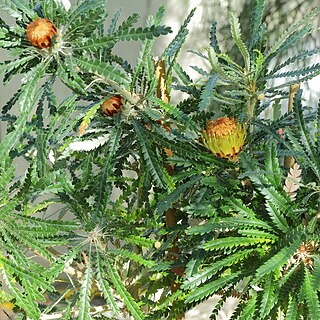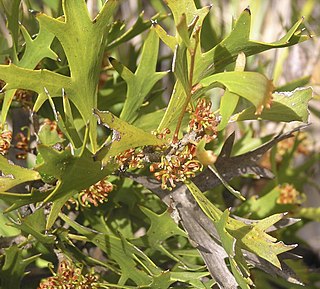
The Cricket World Cup is the international championship of One Day International (ODI) cricket. The event is organised by the sport's governing body, the International Cricket Council (ICC), every four years, with preliminary qualification rounds leading up to a finals tournament. The tournament is one of the world's most viewed sporting events and is considered the "flagship event of the international cricket calendar" by the ICC.

The Australian Greens, commonly known as The Greens, are a confederation of Green state political parties in Australia. As of the 2019 federal election, the Greens are currently the third largest political party in Australia by vote. The leader of the party is Adam Bandt, and the party's co-deputy leaders are Larissa Waters and Nick McKim.
The 1975 Cricket World Cup was the inaugural Cricket World Cup, and the first major tournament in the history of One Day International (ODI) cricket. Organised by the International Cricket Conference (ICC), it took place in England between 7 June and 21 June 1975.

A totem is a spirit being, sacred object, or symbol that serves as an emblem of a group of people, such as a family, clan, lineage, or tribe.

Bryan Neathway Brown, AM is an Australian actor. He has performed in over eighty film and television projects since the late 1970s, both in his native Australia and abroad. Notable films include Breaker Morant (1980), Give My Regards to Broad Street (1984), F/X (1986), Cocktail (1988), Gorillas in the Mist (1988), F/X2 (1991), Along Came Polly (2004), Australia (2008), Kill Me Three Times (2014) and Gods of Egypt (2016). He was nominated for a Golden Globe Award and an Emmy Award for his performance in the television miniseries The Thorn Birds (1983).

William Alfred Brown, was an Australian cricketer who played 22 Test matches between 1934 and 1948, captaining his country in one Test. A right-handed opening batsman, his partnership with Jack Fingleton in the 1930s is regarded as one of the finest in Australian Test history. After the interruption of World War II, Brown was a member of the team dubbed "The Invincibles", who toured England in 1948 without defeat under the leadership of Don Bradman. In a match in November 1947, Brown was the unwitting victim of the first instance of "Mankading".

Banksia gardneri, commonly known as prostrate banksia, is a species of prostrate shrub that is endemic to Western Australia. It has pinnatipartite or serrated leaves, usually rusty brown flowers, and up to twenty-five elliptical follicles in each fruiting head. It occurs along the west part of the south coast of the state.

Banksia littoralis, commonly known as the swamp banksia, swamp oak, river banksia or seaside banksia and the western swamp banksia, is a species of tree that is endemic to the south-west of Western Australia. The Noongar peoples know the plant as pungura, boongura or gwangia. It has rough, crumbly bark, linear, more or less serrated leaves arranged in whorls, yellow flowers and up to two hundred follicles in each head.

Banksia armata, commonly known as prickly dryandra, is a species of often sprawling shrub that is endemic to Western Australia. It has deeply serrated leaves with sharply pointed lobes and spikes of about 45 to 70 yellow flowers.

Banksia bipinnatifida is a species of shrub that is endemic to Western Australia. It is a prostrate shrub with a lignotuber, an underground stem, only a few divided leaves, large cream-coloured to pale yellow flowers and large fruit.

Banksia formosa, commonly known as showy dryandra, is a species of shrub that is endemic to the south-west of Western Australia. It has pinnatipartite leaves with up to forty triangular lobes on each side, up to more than two hundred, conspicuous golden orange flowers and up to sixteen egg-shaped follicles in each head.
Banksia seneciifolia is a species of column-shaped shrub that is endemic to the south-west of Western Australia. It has linear, pinnatifid leaves, yellow flowers in heads of about twenty-five, and narrow egg-shaped follicles.

Banksia squarrosa, commonly known as pingle, is a species of prickly shrub that is endemic to Western Australia. It has linear to narrow lance-shaped leaves with up to ten sharply-pointed teeth on each side, yellow flowers in heads of about sixty and later, up to seven oblong to egg-shaped follicles in each head.

Persoonia cornifolia is a plant in the family Proteaceae and is endemic to eastern Australia. It is a shrub with elliptic to egg-shaped leaves and hairy yellow flowers, and grows in northern New South Wales and south-eastern Queensland.

Hakea macraeana, commonly known as the willow needlewood or Macrae's hakea, is a species of shrub native to eastern Australia. The species was first formally described by botanist Ferdinand von Mueller in 1886 in the Australian Journal of Pharmacy. The species name honours one George Macrae, who aided the original collector William Baeuerlen.
Persoonia prostrata is a plant in the family Proteaceae and is endemic to the northern tip of Fraser Island in Queensland, but is presumed to be extinct. It is similar to Persoonia stradbrokensis but is a prostrate shrub with smaller leaves and flowers.

Persoonia silvatica, commonly known as the forest geebung, is a plant in the family Proteaceae and is endemic to south-eastern Australia. It is a shrub or tree with more or less lance-shaped leaves and small groups of yellow flowers with white centres. It grows mainly in forest near the border between New South Wales and Victoria.

Persoonia media is a species of flowering plant in the family Proteaceae and is endemic to eastern Australia. It is an erect to spreading shrub or tree with branchlets and leaves that are glabrous or only sparsely hairy, elliptic to egg-shaped leaves and up to sixteen yellow flowers on a rachis up to 150 mm (5.9 in) long.

Hakea bicornata is a shrub in the family Proteaceae native to Western Australia, with attractive creamy-white flowers and fruit with two distinctive horns.

Hakea ceratophylla, commonly known as the horned leaf hakea, is a shrub in the family) Proteaceae and is endemic to the southwest of Western Australia. It is a stiff shrub with variably-shaped leaves that are sometimes lobed and flowers with white or rusty-coloured hairs.

















